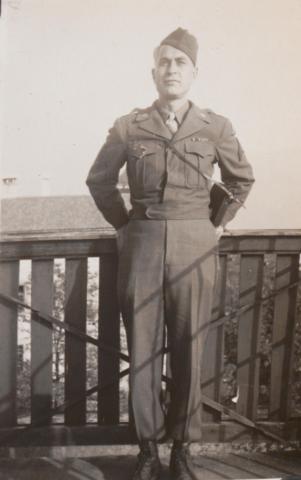
The World War II Experience of Clarence O. Williams
Playwright Becky Boesen gleaned some of her inspiration for her play, Not Too Far Distant, from the Nebraska Stories of Humanity: Holocaust Survivors & WWII Veterans, Network Portal & Educational Website. The collection aims to centralize access to the history of Nebraska Holocaust survivors and WWII liberators of Nazi camps in a collection of searchable stories and digitized documents. The site includes testimony, geographical and primary historical resources, including the collection of Staff Sergeant Clarence O. Williams (December 17, 1911-April 11, 1994), a combat medic assigned to the US 122nd Medical Battalion, 42nd Division (the Rainbow Division) during World War II.
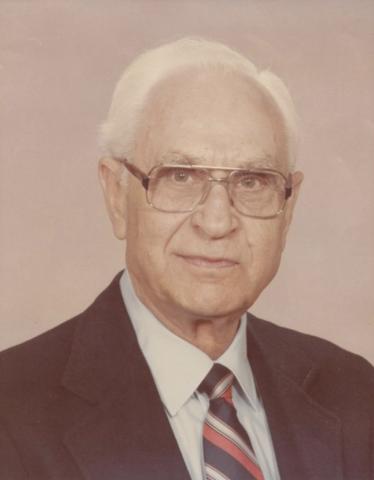
Clarence O. “Willie” or “C.O.” Williams grew up in Crescent, Nebraska, and Council Bluffs, Iowa. He married Gretchen Klonus before serving as a U. S. Army Medic in the 42nd (Rainbow) Division. According to his son Thomas, “for reasons he never shared, he took a camera with him, and produced the carefully catalogued and documented album after returning home, ultimately settling in Lincoln, Nebraska.”
He continued: “The Holocaust offended every principle my father taught me. It emerged as a life passion for him, above other life and war experiences, that this story above others, needed telling. His passion led him from national memorials, to Lincoln, Nebraska classrooms; from letters, to lectures, to this gallery. He is now “over the Rainbow.” His joy in this exhibit today would be inexpressible. He would feel immeasurably honored that he continues to play a small part in telling – that none may forget." [Thomas L. Williams, April 11, 2004]
Williams deployed to France in January 1945 and was present at the liberation of Dachau concentration camp in April of that year, photographing both the liberation of Dachau and other experiences he had during the war in Europe. Williams’s collection of photographs—some of the local scenery and everyday military life and others far more graphic and impactful at Dachau—and many letters between he and his wife, Gretchen, in 1945 detailing the end of World War II in Germany have been transcribed in full and the documents and images are included in the website. They provide a fascinating and incredible serviceman's account from America’s military presence in Germany at the end of World War II.
Below are some excerpts along with several notable images, all taken by Williams.
On Wednesday, April 11,1945, Williams wrote to his wife Gretchen:
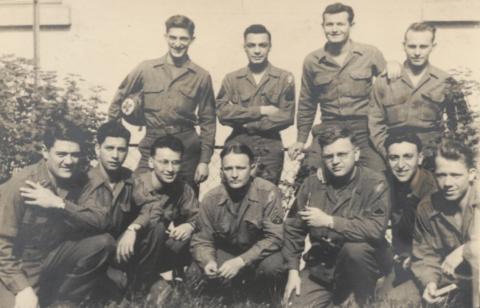
“We are going deeper and deeper into Germany…We came through a town this morning where a German Hospital had been set up in a large building that had previously been a Prince’s home. We walked out in the gardens in the rear and it was really beautiful. The pansies were all in bloom and the lawns so nice and green. In the center of the spacious grounds was a small lake with swans and ducks swimming around. Sometimes it is hard to realize a country at war with all the beautiful things they have here. I should think they would be contented with what they have.
Things here are quite different than France. Their roads are much better and their farm lands are well kept. I was amazed at the amount of farmland they have. I assumed it would be house upon house from the way they have yelled for more territory. Contrary to what they would have you believe in the states is the fact religion is very prevalent. Every village that we pass through, the church with its high steeple is the outstanding building in the town. Of course many of them are blown off by artillery as the German snipers use them and they are also used for observation.”
On Monday, April 30, 1945, the day after the liberation of Dachau, Williams wrote his wife about his details of the concentration camp as they discovered it and took several images on his own camera (not sent in the letter, but in his collection), and mentioned that Life Magazine also had photographers there. It is also the letter where Becky Boesen found the perfect title for her play, Not Too Far Distant:
“Well another month has passed and the war continues but I sincerely believe the end is now in sight and not too far distant…
Had a new experience today that I will never forget as long as I live. I had read a lot about concentration camps and the brutal treatment given the prisoners but often wondered if it were all true. Now I can vouch for it. The camp covered an area of probably ten square blocks and much of it was surrounded by high cement walls with barbed wire on top and electric wires over those. A railroad runs through the camp and we saw an entire train of box cars with dead human bodies that they had no time to dispose of.
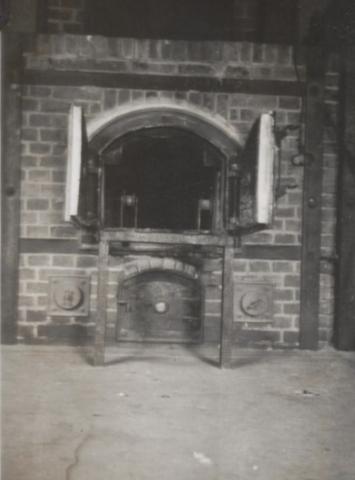
Inside the camp was one building used as a crematory rather it was built especially for that purpose. It had one room for showers where the prisoners could get wet and open up the pores of their skin then into the gas chamber. Here they were killed, removed and stacked like cordwood until they could be shoved in the ovens. They were stacked in four rooms and the boys estimated around 700 to 800 bodies awaiting cremating. Those laying in the box cars were nothing but skin and bone and on many, the thighs of their legs weren’t as big as my forearm. Inside the camp they had factories, machine shops, hospital, and foundries where they used the slave labor guarded by SS Troops to make the tools of war etc. In the largest single section of the camp was several thousand prisoners from every country in Europe and even some Americans. They were now displaying all their national flags and it was very colorful. We talked with one prisoner from Yugoslavia (formerly a bank vice-president) who had been there 20 months. His neighbor had reported him listening to BBC and American news broadcasts. He was well educated and spoke English very well. Around this section was barbed wire entanglements and cement pill boxes for the guards every few yards. There was also a deep ditch surrounding the section inside the wire. Outside there was a moat running around the section. They told us the men on the train had been riding without food for 18 days and the prisoners told us they worked 7 days a week from 5:00 AM until 8:00 PM.
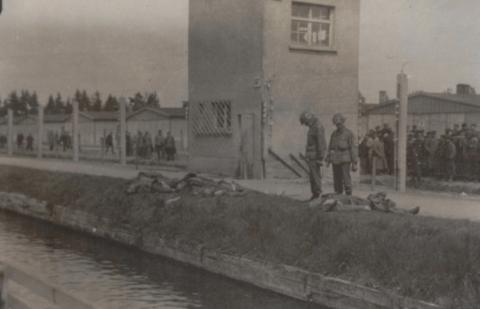
There were several guards still laying around the grounds where they had been killed. Most of them didn’t bother to shoot but merely beat them to death with rifle butts when our troops took over. Thousands of our troops visited the camp today and I doubt very much if there will be another SS Trooper taken prisoner. It is almost unbelievable that any one could be hardened to the point of doing the brutal things they did and it certainly gives one a different viewpoint toward the German people. This is all probably boring to you but you just can’t picture such sights without seeing them with your own eyes.
Well darling guess that will be all for today except to tell you again I love you worlds.
Always Yours
Clarence”
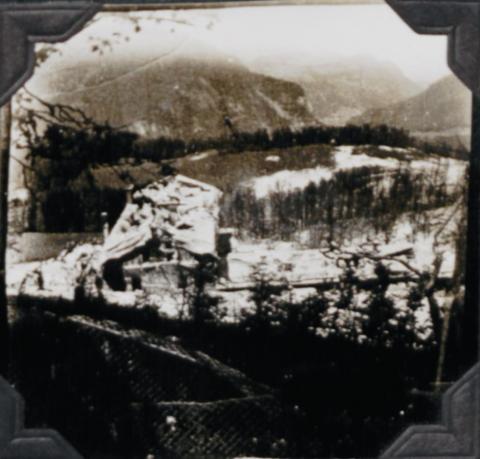
In a letter dated Wednesday, May 9, 1945, Williams wrote to Gretchen:
“We really had an interesting day however as we visited Berchtesgaden and Hitler’s estate. We were right down in the Bavarian Alps and the country in that vicinity is without a doubt the most beautiful country I have ever seen. It was a beautiful day with few clouds but the snow capped peaks reached into them. They wouldn't allow us to see Hitler’s house there, but the guards told us it was nothing but shambles because of heavy bombing. We did see his eagle’s nest on top of the rocky peak and I took a picture of it but may have been too far away to bring it out on film…The grounds on Hitler’s estate are beautiful with nice roads winding up the mountains…Up to the timber line there is beautiful blue grass and many wild flowers in bloom. At the floor of the mountains entering his grounds is a very large stream that flows over the rocks and the current is very swift. How any one could sit in such a peaceful place and plan such wars, I can’t figure out…
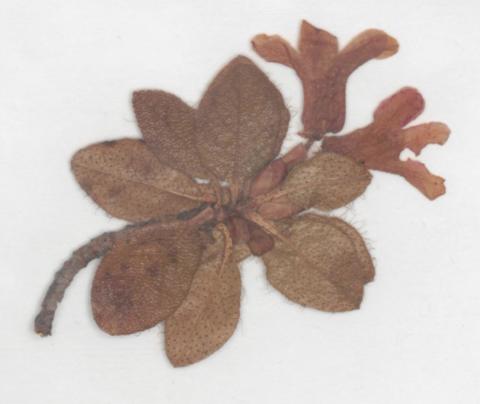
P.S. I am enclosing this bouquet I picked on Hitler's estate. Two violets and one yellow flower, I don't know what it is.”
